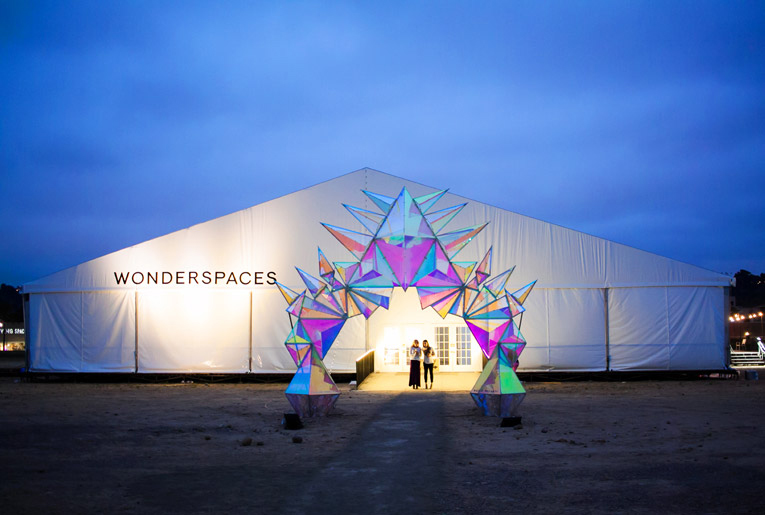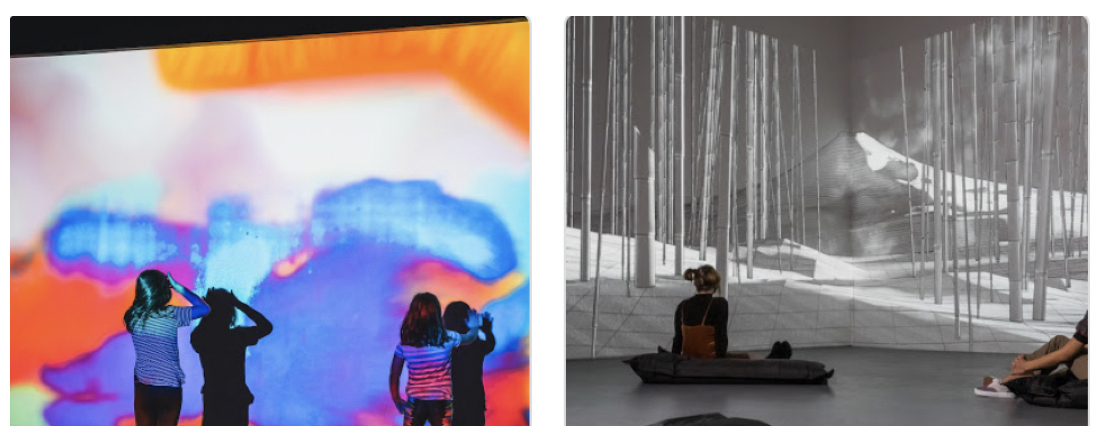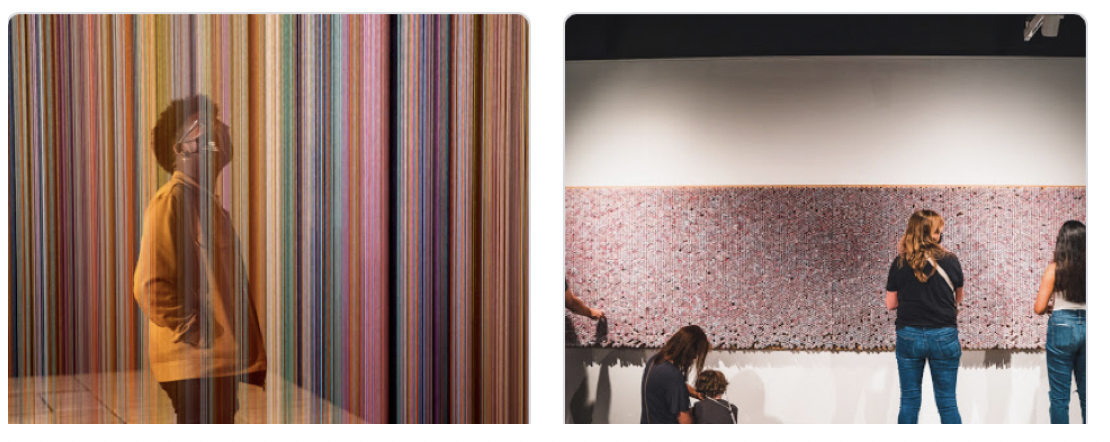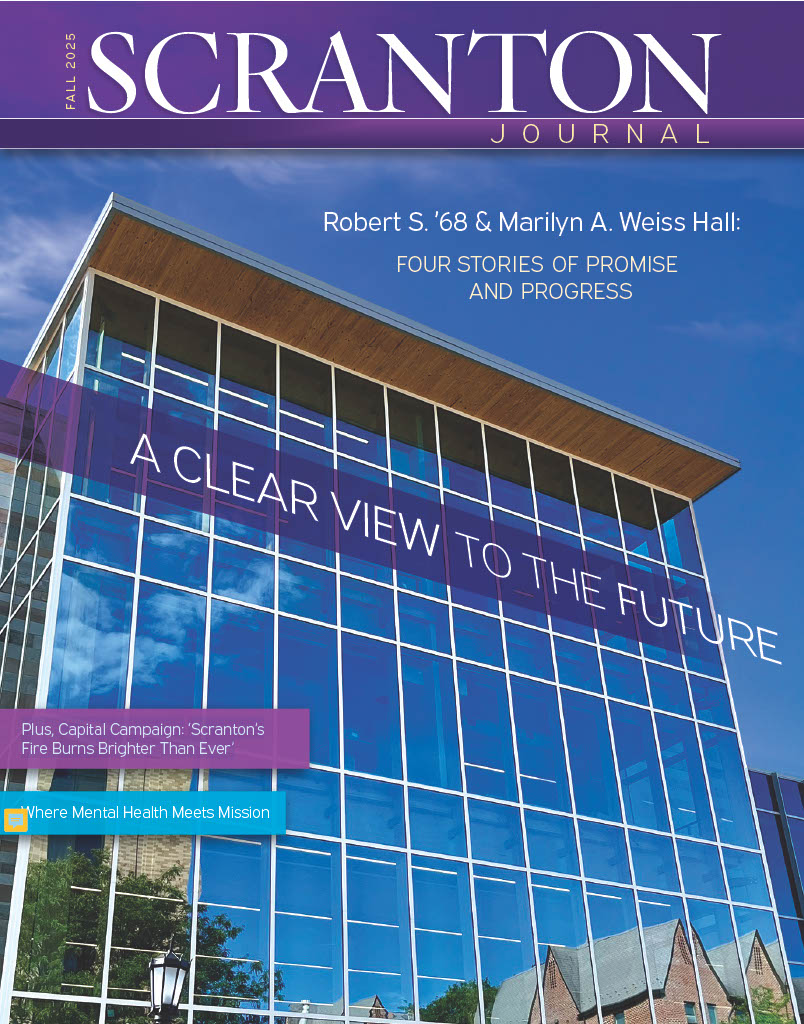Wonderspaces is not your typical art gallery or museum space. When Patrick M. Charles ’05 and his co-founder Jason Shin set out to create an interactive space to showcase immersive, large-scale art, they wanted a space that was at least 20,000 square feet — think the size of a Best Buy or sporting goods store. When buildings of that size were in short supply or didn’t want to rent to the duo for a short-term lease for an art exhibit, they decided to stage the first exhibit of Wonderspaces in a tent in San Diego, where the mild weather would be hospitable.
Now they just needed to find somewhere to put that giant tent.
“We literally looked on Google Maps and found a 22-acre dirt lot, tracked down who owned it, and asked them if we could lease the 22-acre piece of land and set up our first show of Wonderspaces,” Charles recalled.

That was in the summer of 2017. Their first Wonderspaces show featured 14 artists from around the world and ran for 87 days. More than 66,000 people attended, and when they set up shop again in the summer of 2018 — this time in a holding area for cruise ship passengers that is unused in the summer in San Diego — 116,000 people came to the show.
“I remember that first summer, I made a sign that was 40 feet long out of four by eight plywood."
“We really started at zero; no one knew who we were. We had 14 Instagram followers,” Charles said. “I remember that first summer, I made a Wonderspaces sign that was 40 feet long out of 12 pieces of four-by-eight plywood. I cut it out with a circular saw and that was our only sign for the first few weeks, in front of our tent. But something just resonated with people coming to our show, and word of mouth was very big for us.”

A Moment of Awe
“These artists who are creating work for a weekend or weeklong festival, when that festival ends, there’s no real home for these artworks,” Charles said. “They were going into storage or just sitting in a corner of their studio. And we just thought, ‘Wouldn’t it be great if we could create a company that connects all these artists with an audience that would like to see this art?’ It is great for that artist to be able to show [their work] to hundreds of thousands of people that would never have had a chance to experience it. Having that venue to show artwork that will inspire people, that will provide that moment of awe for people, is important.”These days, Wonderspaces has exhibits in Austin, Philadelphia, San Diego and Scottsdale, and they’ve upgraded from tents to physical buildings large enough to house their art installations, from the cruise ship terminal in San Diego to warehouses and even a former movie theater. Wonderspaces features artworks that are typically created for festivals or fairs, with the goal to reach people who might not normally seek out art and expand the reach of the artists featured.
"Having that venue to show artwork that will inspire people, that will provide that moment of awe for people, is important.”
One of the artists from that first Wonderspaces exhibit in the tent was Matthew Matthew, who created the work “On a Human Scale.” Described on the artist’s website as a “living, breathing, singing cross-section of humanity,” the piece is an interactive video installation with an electric keyboard, which the public is invited to play. Instead of piano notes, each note is sung by an everyday New Yorker, who appears on the screen in front of the viewers.
“It’s a really immersive, beautiful piece of art that he’s created,” Charles said. “And it was shown at the Tribeca Film Festival, there are pictures of Robert De Niro playing it. But then it was sitting in his storage unit when we asked him if we could show it.”
The Beginning

Co-founders Charles and Shin met in 2005, when they were both in training in Quantico, Virginia, to become officers in the U.S. Marine Corps. They’d kept in touch in the decade since their training, and were inspired to create Wonderspaces from their own experiences with art both at home and abroad. They first discussed the idea in early 2016, when Charles was living in Belgium and working as a management consultant for TomorrowLab, an innovation consulting company. After four years as an officer in the Marines, including a nine-month tour of duty in Iraq, Charles transitioned to a management consulting career. He moved to Belgium for an MBA program and then stayed to work at TomorrowLab, where he had clients throughout Belgium and in Paris and Milan.
“[I had] to decide whether I was going to move my life again — and it was a pretty comfortable life, I had great friends and colleagues and a great job traveling throughout Europe — to take the state-minimum salary allowed and start a company back in the United States,” Charles recalled.
But it was while living and traveling in Europe that he had noticed what he called, “these one-off mixed media or multimedia, very immersive art pieces that were very open to the general public. Even if you don’t consider yourself an ‘art person,’ you can appreciate this and understand it and be really in awe of what these artists are creating. And Jason was living in LA and seeing the same thing at museums such as LACMA [LA County Museum of Art.]”
In creating Wonderspaces, they wanted to showcase several of these immersive art installations in one place, as well as provide a longer-term home for festival pieces like “On a Human Scale.” The zest for travel and exploration that led Charles to live in Belgium, and subsequently inspired the idea for Wonderspaces, can be traced back to his days at Scranton.
A Lifelong Learner
Charles was born and raised in Scranton and followed his older sister Laura (Charles) Boyarsky ’01 to the University, where he earned a degree in accounting.
“[Scranton] really was the foundation of my curiosity of the world. I think that’s rooted in the Jesuit education, the liberal arts education."
“It really was the foundation of my curiosity of the world. I think that’s rooted in the Jesuit education, the liberal arts education,” Charles said. “Before attending Scranton, I had never read Plato or the Bible cover to cover or learned about the Koran and Islam.”

And as a self-described lifelong learner, Charles is back in school again, this time earning a master's in business analytics from the University of Notre Dame. He maintains his ownership stake in Wonderspaces but has stepped back from the day-to-day management of the business to focus on his studies and perhaps future entrepreneurial efforts.
“The University of Scranton opened my mind that there’s a big interesting world out there, and I wanted to see it. My first time ever on a plane was when I was 21 and had an internship with the Pentagon's Office of the Inspector General. During that internship, we went to San Francisco; Washington, D.C. to SFO [airport]. Now I’ve been to more than 40 countries and all 50 states, and I think that curiosity and becoming a lifelong learner is rooted in my time at Scranton.”


